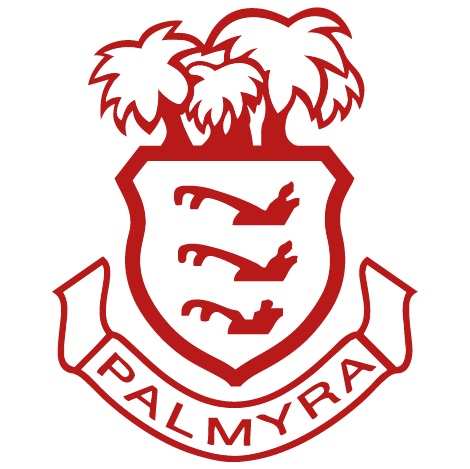GIFTED AND TALENTED INFORMATION
This page serves to provide the foundational information on our district's Gifted and Talented Program.
Continuum of Services
Gifted and talented (GT) education programs aim to meet the unique needs of students who exhibit exceptional intellectual, creative, or artistic abilities. These programs offer a continuum of services from Pre-K (preschool) through 12th grade (high school) to support the development of gifted students.
Differentiated Curriculum and Instruction:
- Curriculum enrichment and acceleration to provide challenging content for gifted students.
- Advanced coursework, including honors, Advanced Placement (AP) and dual enrollment programs for high school students.
Flexible Pacing:
- Opportunities for students to progress at their own pace.
- Ability to skip grades or take courses at higher grade levels if appropriate.
Individualized Education Plans (IEPs):
- Development of individualized education plans to meet the specific needs and interests of gifted students.
- Personalized learning experiences that align with students' strengths and goals.
Enrichment Programs:
- Extracurricular activities, clubs, and competitions related to gifted areas of interest, such as science fairs, math competitions, art shows, and debate clubs.
Mentorship and Counseling:
- Access to mentors and experts in the gifted domain.
- Guidance and counseling services to address the social and emotional needs of gifted students.
Professional Development for Teachers:
- Training and support for educators to effectively teach and differentiate instruction for gifted students.
- Collaboration with GT specialists and resource teachers.
Cluster Grouping:
- Placing gifted students in the same class to facilitate peer interaction and intellectual stimulation.
- Encouraging collaboration and teamwork among gifted peers.
Dual Enrollment and College Credits:
- Opportunities for high school students to earn college credits through dual enrollment programs or advanced courses.
- Early college admission options for exceptionally advanced students.
Research Projects and Independent Studies:
- Encouragement and support for gifted students to pursue research projects or independent studies in their areas of interest.
Transition Planning:
- Guidance and resources for the transition from K-12 to higher education or the workforce.
- College and career counseling services tailored to gifted students.
GIFTED AND TALENTED SCREENING PROCESS
In addition to the existing portfolio process for identifying students using multiple measures, the Charles Street School is adding additional measures to the pool of options for G & T screening:
Scores will be collected, where available using any number of the following data points:
Standardized Assessments, including but not limited to NJSLA, Linkit! Benchmarks, iReady, F&P, Dibels, etc. Project-Based Learning Performance Class Grades Renzulli Form (Teacher Nomination) NNAT3
NNAT3 Overview
Palmyra School District is now using the Naglieri Nonverbal Ability Test (NNAT3) as one of its screening tools. Screeners are used to identify students with the potential for Highly Capable Program eligibility. Screening results will be communicated to schools and families in the late winter or early spring.
What is the NNAT3? The NNAT3 is a measure of general ability.
What level of the NNAT3 will be administered to my student? Level administered is determined by the student’s birth date. Therefore, students within any grade level classroom may receive different levels of the NNAT3. The date of birth is entered during a student’s account creation, and the NNAT3 platform generates the level presented to the student.
My student is color-blind. Can they still take the NNAT3? If your student is color-blind, they may have difficulty completing the NNAT3. The NNAT3 is a non-verbal test, and each item uses various colored shapes. If your student cannot distinguish between colors, we will use a different screening measure.
If I know my child's Naglieri Ability Index, how do I find their percentile rank?
The official manual for the NNAT3 identifies the percentile ranks that correspond to each Naglieri Ability Index: NAI Table. (Link opens a PDF)
How is the NNAT3 administered? The NNAT3 is administered on a laptop. Students take the test during the school day. Students are given 30 minutes to complete the test. Extended time is available for students with documented extended time accommodations. Proctors follow directions for administration in order to ensure district-wide consistency of administration.
When is the NNAT3 typically administered? The school is hoping to administer the NNAT3 in late fall where it fits naturally in between other existing assessments.
How is performance on the NNAT3 measured? The score obtained from the NNAT3 is called the Naglieri Ability Index (NAI). A NAI of 100 is considered average, and 95% of students will score between 68 and 132. The Highly Capable Department uses a student’s National Percentile Rank (NPR) to determine eligibility for further testing. The NPR indicates how the student performed relative to other test-takers in their age group. A student with an NPR of 86 performed as well as, or better than, 86% of their same-age peers. An NPR between 25 and 75 is considered to be within the average range.
What is the connection between my student’s NNAT3 percentile and classroom performance? The NNAT3 is a measure of a student’s cognitive ability. A student need not read, write, or speak English in order to take part in the test. The NNAT3 is not a measure of classroom performance and is not correlated to the standards and content of focus in a student’s current grade level. It is possible that a student will achieve a high NNAT3 percentile score, yet score differently on tools that measure academic achievement.
How is the NNAT3 used in the eligibility process? NNAT3 performance is one data point within a larger portfolio of data. The NNAT3 alone will not qualify nor disqualify a student from potential eligibility for Gifted and Talented Services.
